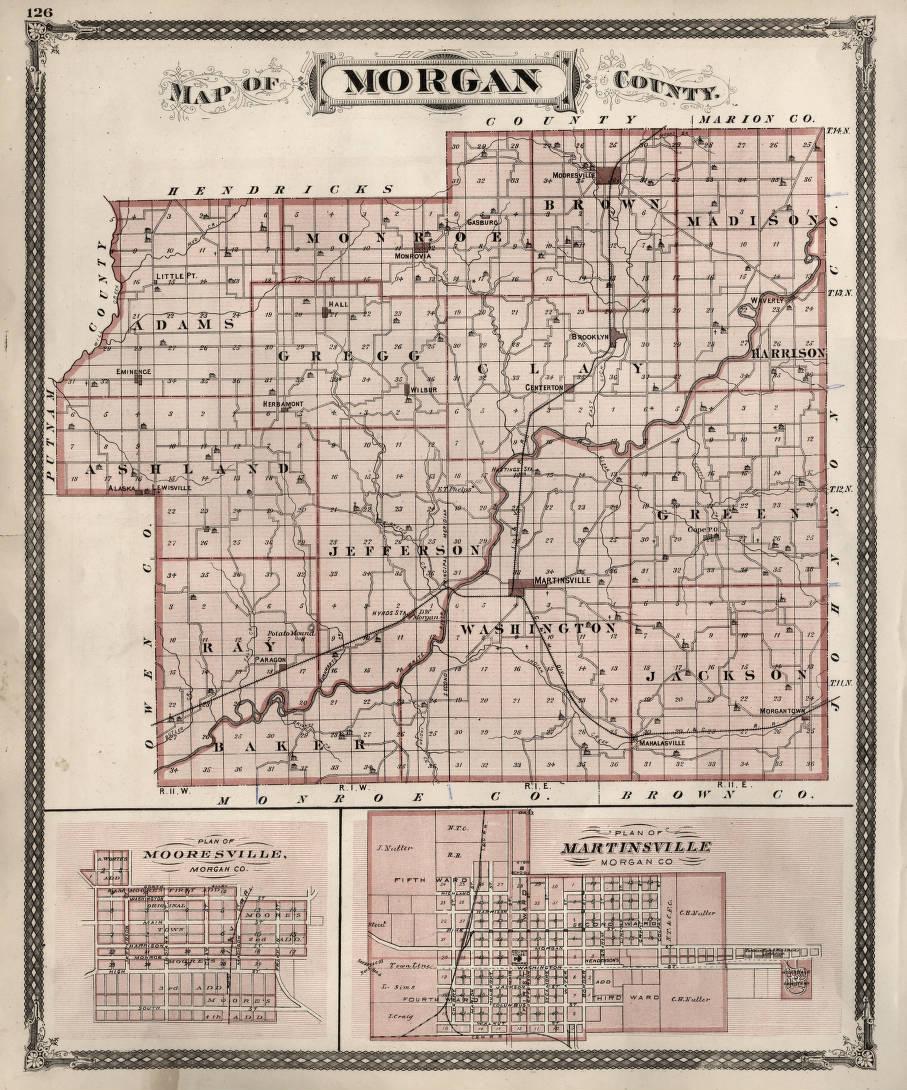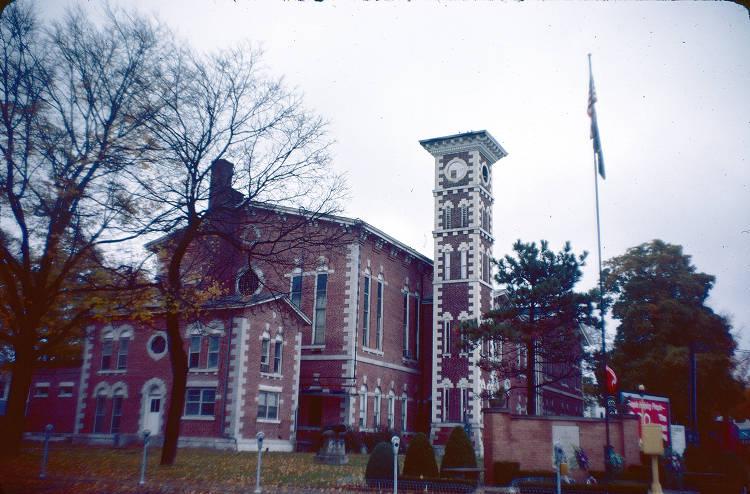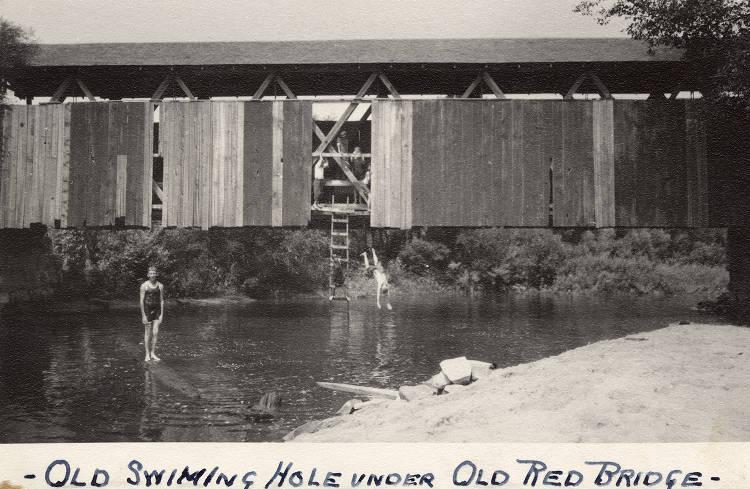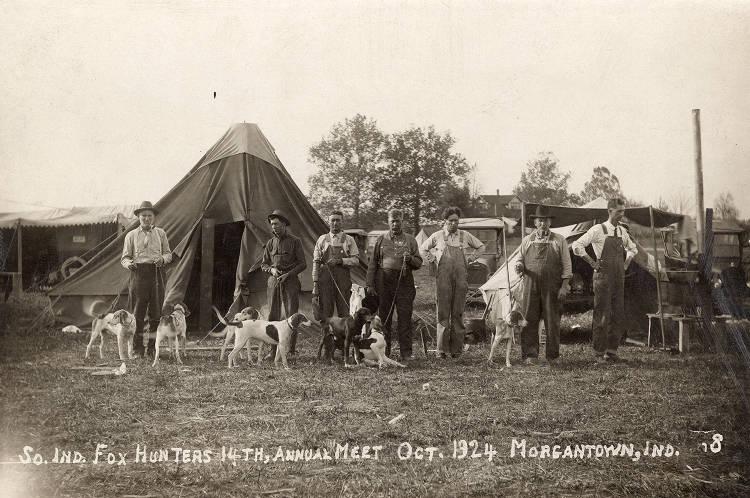Morgan County is adjacent to Indianapolis-Marion County on the southwest and part of the Indianapolis Settlers began entering land in the area that is now Morgan County in 1820. The county was officially organized in 1821, with Martinsville platted as the county seat in March 1822.

The northern part of the county, including the town of Mooresville (platted in 1824), was settled by Quakers. The county’s first white settler, Asa Bales, a North Carolina Quaker, later founded the town of Westfield in Hamilton County (1834). Samuel Moore built a grist mill on White Lick Creek near Mooresville that contributed greatly to the town’s development during the 1830s.
Through the 1830s, Martinsville relied on the whiskey trade for much of its modest wealth and growth. By the mid-1830s, there were eight distilleries producing corn and rye whiskey and apple and peach brandy and dozens of taverns in and around Martinsville. After 1835, however, the economic focus switched to the pork trade. Hogs were driven from all over central Indiana to slaughterhouses in Martinsville. The carcasses were packed during the winter and floated on flatboats down the West Fork of White River to the Ohio River, arriving in New Orleans by the spring. This trading system flourished until the development of railroads in Indiana after 1850.

In 1853, the Martinsville and Franklin Flatbar Railroad was completed to Martinsville but operated for less than five years. The completion of the Indianapolis and Vincennes Railroad in the late 1850s spurred growth in the county seat. The pork packing and shipping business continued to flourish, and the town added a large woolen factory. The completion of the Indianapolis and Vincennes Railroad to Mooresville in 1867 spurred the pork shipping industry as farmers took advantage of the large stock pens just south of town while waiting for trains.
An line constructed to Mooresville in 1901 and hourly trains into Indianapolis gave residents easy access to the capital city’s shops and department stores. By 1903, the interurban line extended to Martinsville. Speed and convenience made the interurban the top choice for both freight and passenger service, and the Indianapolis and Vincennes Railroad was all but abandoned by 1920. By the 1930s, Morgan County farmers were using trucks to haul their produce to market and cars for personal travel. With the railroad used sparingly and the interurban abandoned, business slowed in the county’s two largest towns.

For almost 100 years, from 1888 to 1968, Martinsville had dozens of sanitariums that drew people to the facilities for the health benefits and the artesian mineral water found in the area. The Martinsville Sanitarium was listed on the National Register of Historic Places in 2005. The city also purportedly had one of the first mineral spas permitting African American patronage.
Merritt Park, located in the northwest part of Martinsville, is named in honor of Albert Merritt (1871-1958), the son of a freedman. Merritt started the city’s first chapter of the Boy’s Club. Despite these early signs of progressive racial attitudes, the city was the site of the 1968 brutal murder of 21-year-old Carol Jenkins, a young African American encyclopedia salesgirl. Her murder had remained unsolved for 33 years until police received an anonymous phone call and a letter identifying Kenneth C. Richmond as Jenkins’ assailant. Richmond was arrested on May 8, 2002, but died on August 31, 2002, before standing trial. In 2017, a memorial stone was dedicated in front of a Martinsville municipal building in her remembrance. Still, that same year the reported that the city still maintained a reputation among African Americans as a sundown town, one where Black citizens were not welcome after dark.

In 2014, Martinsville annexed land which increased the city size by one-third, pushing its border to the frontage of I-69. The 142-mile extension of I-69 from Indianapolis to Evansville started in 2009 and entailed upgrading SR 37 to interstate standards. Section 5 of that upgrade runs along 26 miles from Bloomington, Indiana to Martinsville in Morgan County and includes 35 miles of access roads. Section 5 was begun in late 2014 and completed in October 2018.
On Morgan’s County’s western edge along SR 67, Heartland Crossing is one of the largest housing developments in the state of Indiana. It spans three counties: Morgan County, Hendricks County, and Marion County. The neighborhood has 2,200 homes sitting on 675 acres of land. Amenities include a golf course, two pools, parks, a walking trail, and a shopping center. Neighborhood children attend Mooresville, Plainfield, or Decatur schools depending on their location.

Massive in scale, the neighborhood had more than their share of homes in foreclosure following the 2008 housing crisis, which almost resulted in a tri-county depressed zone. Home sales rebounded in the later 2010s, and the neighborhood now anchors a thriving cluster of commercial, industrial, and health-related businesses along Morgan County’s SR 67 corridor.

Is this your community?
Do you have photos or stories?
Contribute to this page by emailing us your suggestions.




